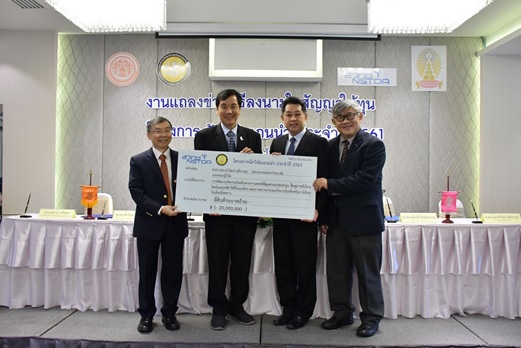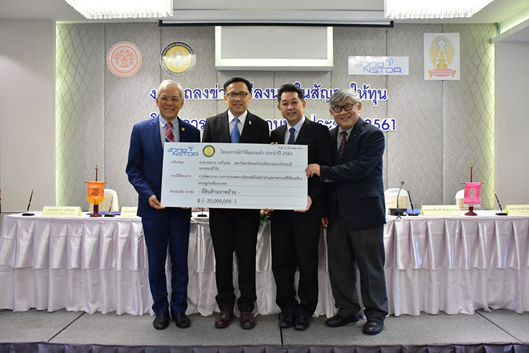Two senior professors were recently named the recipients to the prestigious NSTDA Research Chair Grant 2018. Prof. Apiwat Mutirangura, a professor at the Faculty of Medicine, Chulalongkorn University won the grant for his project titled “Development of unprecedented, high value and high benefit medical innovations: REjuvenating DNA
by GEnomic stability Molecules (RED-GEMs) and cancer screening by detecting protein or mRNA of white blood cells”, whereas Prof. Somchai Wongwises from KMUTT Faculty of Engineering for a project on “Development of Next Generation Heat Transfer Processes for Future Economic-Driven Industries”.
In his project, Prof. Apiwat will advance the discoveries previously made by his team into the development of two distinct innovations - - DNA rejuvenation and cancer screening. Based on a new epigenetic mark discovered by his team, Prof. Apiwat aims to develop REjuvenating DNA by GEnomic stability Molecules (RED-GEMs) for preventing DNA damage and fixing cellular aging process. To improve cancer screening efficiency, the research team will employ their recent discovery on proteins in white blood cells (WBCs) that have high sensitivity and high specificity in cancer detection.

Prof. Somchai’s project aims to develop scientific principles for design and improvement of heat transfer process and high-performance heat exchangers. As heat exchangers are vital components in many industrial plants, this project will create significant impact to the industry, especially ten industries targeted by the Thai Government under Thailand 4.0 initiative.

NSTDA Research Chair Grant was established in 2009, aiming to support high-potential researchers with a large-scale research fund worth up to 20 million baht per grant. Since its inception, the program has funded 17 projects. Among these recipients, 11 projects are in medical sciences, 2 projects in food and agriculture, 2 projects in manufacturing and services, and 2 projects in energy and environment. These projects have resulted in numerous publications, patents and graduate students, and many have been used successfully in the field.
